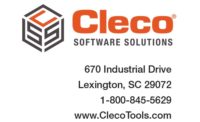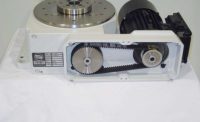In a variety of manufacturing environments, the subject of technical cleanliness continues to grow in importance, for example in the assembly of electronics and medical devices. Whether a manual or automated screwdriving application, choosing the right hardware in your assembly station is critical in the fight against particulate contamination. Given this, let’s examine a number of methods and components which are at our disposal:
Quality fasteners – This is certainly one area where the adage holds true, “You get what you pay for.” One of the key requirements in reducing particulate contamination in any fastening joint is the use of high-quality fasteners. Not only does this increase the likelihood that the screw or other threaded part will adhere to the specified dimensions and tolerances, it also typically increases the overall cleanliness of the fastener. Moreover, some fastener makers offer product lines with a special focus on cleanliness. It pays to take a critical look at your fastener supply chain and inquire about the available options.
Choice of feeder – There are a number of different screw feeder types in use, and all have certain advantages. However, one type which is particularly well suited for use in clean environments is the sword feeder. With screws scooped up from the reservoir with only a gentle up-and-down motion of the sword or segment, this feeder type inherently generates fewer particles than conventional vibratory feeders.
Another feeder configuration which is also low-abrasion in nature is the step feeder. Especially suited to longer screws, in this case linear feed rails serve as a “step” to capture fasteners and smoothly convey them out of the reservoir.
Vacuum suction – Regardless of the feeder type used, the blast air necessary to convey a screw down the feed hose can itself force particles toward the assembly and the fastener joint. Since this is undesirable, one means of addressing this is to first briefly capture the screw exiting the feeder in a separate holding device (Particle Killer) so that vacuum can be applied. This suction allows contaminants to be extracted, at which point the screw can then be further conveyed toward the assembly.
Underfloor screwdriving – For automated applications where approaching the part vertically from beneath is possible, an underfloor or inverted screwdriving spindle installation should be considered. By driving the fastener from beneath, any particles generated as a result of bit-fastener interaction will fall away from the assembly, not onto it, allowing gravity to work to your advantage.
In conclusion, there are indeed a variety of methods which can be used to reduce particulate contamination in your assembly process. Whether DEPRAG’s CleanFeed technologies are used individually or collectively, our qualified product specialists are ready to assist you with your specific application. Please visit us at www.depragusa.com or send your inquiries to info@depragusa.com.






